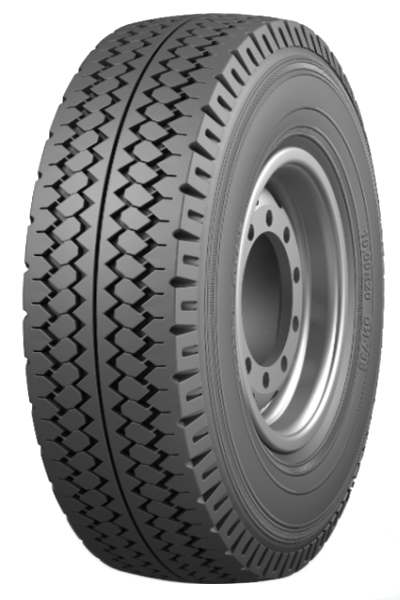Special trailer (ST) tires are bigger, heavier and increasingly available in all-steel radial construction to meet the towing demands of more powerful vehicles and larger campers.
“With the power of today’s vehicles, it’s normal to see them towing a triple-axle trailer in the fast lane passing other cars. The strain of higher speeds for prolonged amounts of time while under constant load is much higher than what many ST tires were originally designed for. So now there is a demand for a more robust ST tire that meets today’s towing demands while still being economical in price,” says Randy Tsai, director of marketing and GBC Motorsports for Greenball Corp.
The current technology in ST tires, specifically radial ST, was developed in the 1990s when the maximum speed rating was 55 mph for ST tires. The trucks of the 1990s were lucky to get up to 55 mph when towing a trailer, says Tsai.
“Today’s tow vehicles are far more advanced than ever before. Heavy-duty diesel light trucks of today have horsepower in the 400-plus range and torques that are 700-plus foot pounds or more.”
Bill Dashiell, senior vice president of TBC Corp.’s commercial division, says trailers, especially RV trailers, are getting larger and heavier and are requiring tires that will accommodate this increased load. “RV manufacturers are moving to more all-steel ST radials to better accommodate the increased loading requirements on the largest luxury models. Even more traditional ST radials are coming out with new designs to improve tire wear and reduce heat buildup.”
Dashiell says the heavy-duty ST radial tires are designed similar to an all-steel truck tire and are able to handle the high loads and provide substantial performance improvements. These tires are available in 16-inch and 17.5-inch sizes.
“While these tires provide significant load and performance improvements, the trade-off is the need for higher load capacity wheels and an increase in acquisition cost. However, for high load applications the benefit of the HD ST radial tire far outweighs any associated increase in costs,” he says.
However, for high load applications the benefit of the HD ST radial tire far outweighs any associated increase in costs,” he says.
In January 2015, TBC introduced the Sailun S637T HD trailer tire with all-steel construction available in ST metric sizing. Greenball also will introduce all-steel ST tires in 2015. “We plan on launching an ultra-premium all-steel construction ST line in 15- and 16-inch fitments as well as another line in the 17.5- and 19.5-inch fitments,” says Tsai.
[PAGEBREAK]
Bias versus radial
American Kenda Rubber Industrial Co. Ltd., which does business as Kenda USA, is also seeing a strong move to radial tires at the OE level in more applications, according to Joe Ostrowski, sales manager for Kenda’s Americana Tire Division. “While the bias tire has its place in the market, the radial is being used as a selling feature by the OEs.”
He has a “rule of thumb” for using bias or radials. “Bias, shorter trips, rough terrain. Radial, longer trips and smooth ride.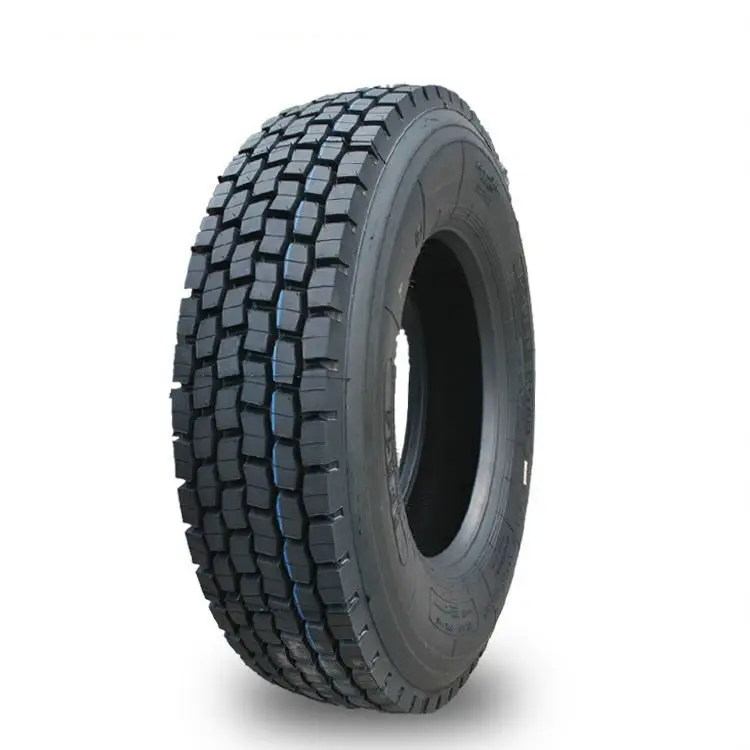 The bias tire runs more on the center crown of the tire while the radial has more road contact across the tread. This leads to the heat being dissipated across a greater area providing longer wear and smooth ride.”
The bias tire runs more on the center crown of the tire while the radial has more road contact across the tread. This leads to the heat being dissipated across a greater area providing longer wear and smooth ride.”
Tom Van Ormer, director of purchasing for East Bay Tire Co., agrees ST tire technology has evolved, but the trick is finding tires that have it. “The ‘new’ technology is existent in the ‘name brand’ trailer tires only.”
During a visit to China in April 2015, Van Ormer saw many new lines of ST products, but says he is aware of only one manufacturer that has “truly changed” the technology of the ST tires. That manufacturer is Carlstar Group LLC, formerly CTP Transportation Products and before that, Carlisle Transportation Products. “With the RH (radial) and LH (bias) trailer tires, they beefed up the bead and sidewall packages so that few others can compete quality-wise with them,” Van Ormer says.
“We see new offers of ‘less expensive’ trailer products from multiple Chinese sources, but none of them seem to offer any new technology, only cheaper prices.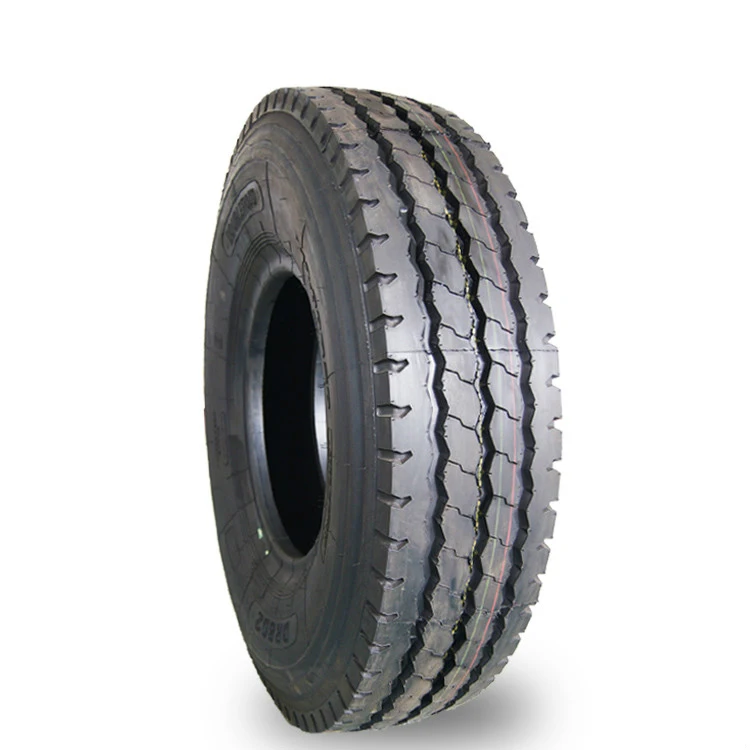 These may be fine for farm and construction use, but not for over-the-road, high-speed applications the consumer uses the ST tires for today.”
These may be fine for farm and construction use, but not for over-the-road, high-speed applications the consumer uses the ST tires for today.”
From LRD to LRE
There are more uses for ST tires that are larger in size with increased load carrying capacities. “ST tires are specifically designed for trailer applications, and the movement into larger sizes brings the benefits of a tire specifically designed for towing to more applications,” says Ostrowski.
The wheel well space on most trailers limits how large ST tires will become. However, the demand to increase carrying capacity has been steadily growing. “One prime example would be the ST225/75R15,” says Greenball’s Tsai. “Traditionally the heaviest load range was LRD. Now most of that demand has now changed to the LRE, which in our Towmaster lineup has an increased load capacity of 290 pounds.”
There are two reasons for the increase in carrying capacity, according to Tsai. The first is trailer manufacturers, specifically the recreational travel trailer manufacturers, are building larger and more elaborate units that require more load carrying capacity. The second is the consumer perception of a heavier load capacity being more robust.
The second is the consumer perception of a heavier load capacity being more robust.
“I once had a consumer request for us to build an ST205/75R14 14 ply,” says Tsai. “I asked her what she was pulling in her trailer and why she would need such a high load capacity from a small tire. Her reply was that she didn’t carry anything heavy but a sport ATV on her trailer, but that she was constantly getting blowouts so she wanted a 14-ply ST205/75R14.”
Tsai’s example highlights the need for dealers to keep up with what is in demand for the towing market. “As consumers demand or desire an ST tire with higher load range, dealers need to be sure they have access to that tire with the proper load range the consumer is looking for. As in my example of ST225/75R15 moving from LRD to LRE in demand, there are other smaller sizes that are doing the same, such as the ST205/75R15 which traditionally has only gone as heavy as an LRC. Now the bigger demand is for the LRD.”
Consumers’ changing expectations are also affecting East Bay Tire Co.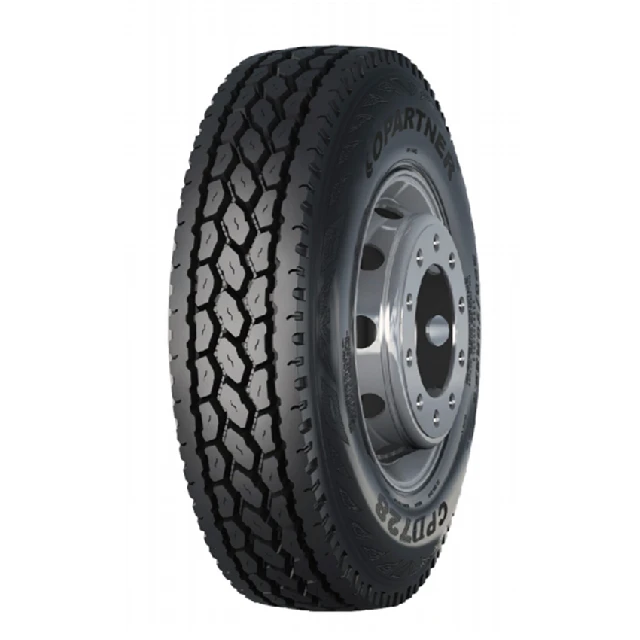 , a wholesaler, exporter and commercial dealer with nine locations in California and Hawaii. “We see many more 225/75R15 10 plies and a large move to the higher ply 235/80 and 235/85R16 tires. The demand is because trailers and boats are getting bigger and equipment is being moved more and more on trailers, so they lean toward the products that can handle the heavier loads,” says Van Ormer.
, a wholesaler, exporter and commercial dealer with nine locations in California and Hawaii. “We see many more 225/75R15 10 plies and a large move to the higher ply 235/80 and 235/85R16 tires. The demand is because trailers and boats are getting bigger and equipment is being moved more and more on trailers, so they lean toward the products that can handle the heavier loads,” says Van Ormer.
Doug Addis, territory sales manager for Maxxis International, says his company does see a trend toward bigger and heavier tires. “Campers are getting larger which requires a larger tire or a heavier load range to support the added weight. Dealers will need to add the larger sizes and new load ranges to their inventory in order to address these larger campers and trailers.”
[PAGEBREAK]
No substitutes for ST
Consumers may be tempted to swap their ST tires for LT tires. The experts who contributed to this MTD article advise against it due to potential differences in load capacity.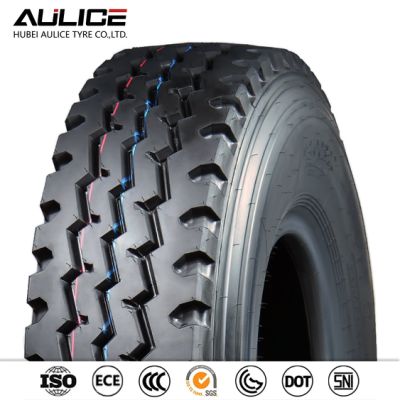
“The sidewall of a trailer tire is designed to support a load while being towed; an LT tire is originally designed to be used on a light truck. Overall, performance in a towing application is better served with an ST tire. Anytime an ST tire is available for a trailer it will better serve the consumer,” says Kenda’s Ostrowski.
Tsai says that as long as the size is the same, people will always assume that they can use a P or LT tire to substitute for an ST tire. “Many don’t think about or take into consideration that Ps/LTs and ST are designed significantly different from each other. Just as in the case of a P-metric versus an LT, the tires are built differently from one another. ST tires are built to carry heavy loads on non-powered axles. Your average ST tire built in the same size as a LT or P will carry a heavier load. The compound in an ST tire is also different and optimized for its application,” he says.
Maxxis does not recommend using an LT in a trailer application, according to Addis.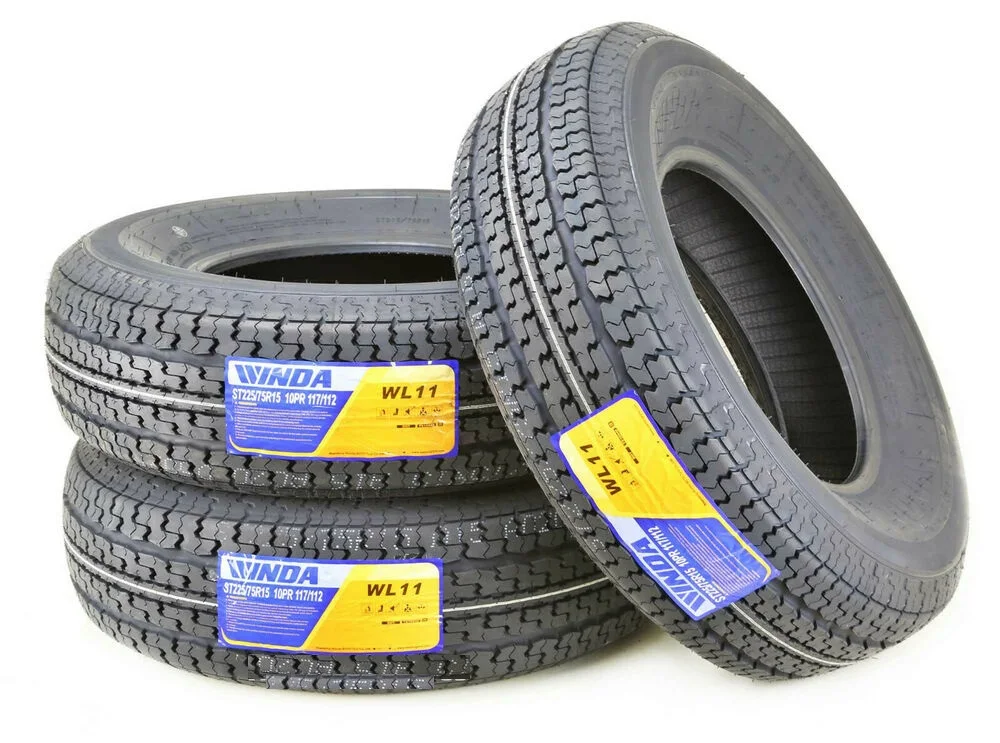
Sales expected to grow
Demand for trailer tires is expected to remain steady and even grow. “In general, the ST tire market has cooled down a bit from its high between 2006-2009,” says Tsai. “However, demand will always be out there and will always be steady. For 2015 we do not see any significant drop in ST tire demand, but rather an increase in supply due to the anti-dumping tariffs on PCR and LTR coming from China,” he says.
The significant growth in RV sales will benefit ST tires, according to Kenda’s Ostrowski. “Conservatively a growth of 10% to 15% should be anticipated. From a dealer perspective, I would increase my stock on radial tires. Consumers are more familiar with radial tires and will accept it readily as a replacement. It is best not to mix radial and bias tires on the same trailer,” he says.
The outlook for the ST market is favorable at TBC, as well. “2015 should be a good year for trailer tires. The economy continues to improve leading to increased disposable income.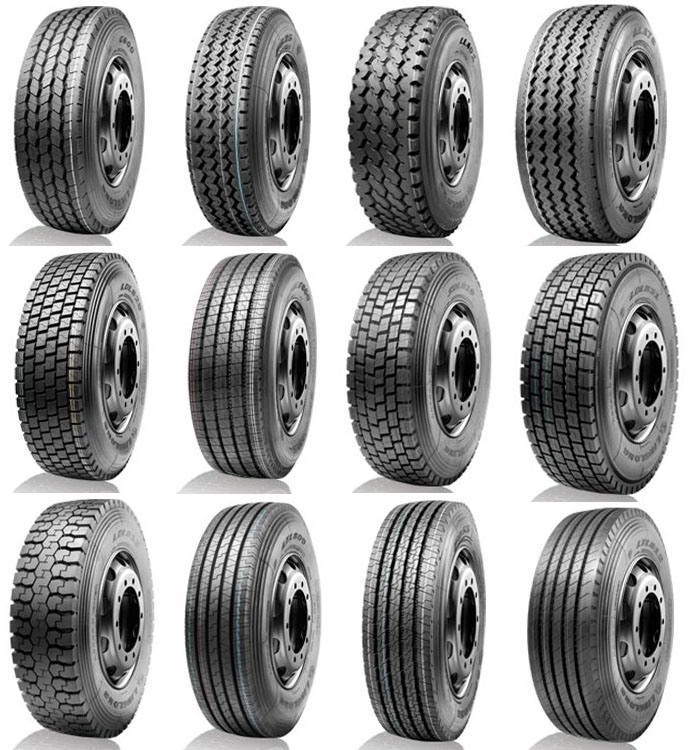 One of the results is the increase in RV sales,” says Dashiell.
One of the results is the increase in RV sales,” says Dashiell.
Trailer tire sales have steadily increased over the past several years, according to Addis. He says Maxxis expects that trend to continue in 2015. There is one exception to the positive outlook. “In California with our drought, we expect to see some decrease in demand, though our gas prices are down. If there is water to fish in or ski in or jet-ski in, people will go to it,” says Van Ormer. “Ag consumption of ST, a very large sector of our market, will certainly decrease as water restrictions cause the amount of acres farmed to shrink as well.”
[PAGEBREAK]
A trailer tire authority
Thanks to strong RV sales, dealers are expected to sell more trailer tires. In many cases, they will be selling tires to people who do not fully understand their proper application and maintenance. “Inflation pressure, load carrying capacity and speed rating are the most common questions and where there seems to be the most misinformation,” says Addis.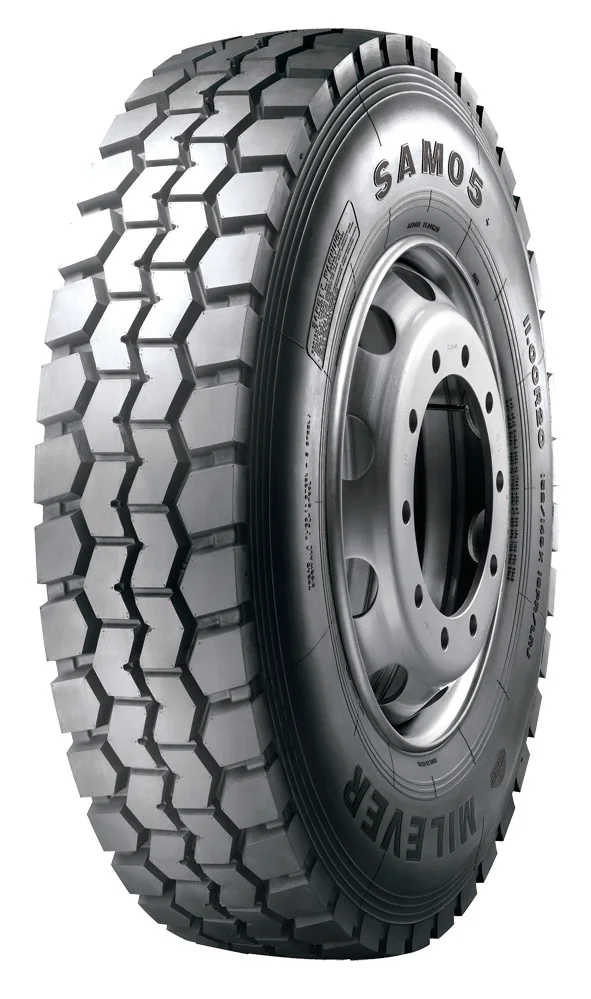
Answering customers’ questions is an opportunity to become a trusted trailer tire authority to them. Taking the time to educate customers helps earn their loyalty. Correct information also helps them use trailer tires safely. “There is a great deal of misinformation and bad habits on the part of the consumer,” says Tsai, who estimates that 95% of most ST tire failures are due to poor or no maintenance, overloading or misuse and abuse.
“Most consumers don’t do any maintenance or routine checks on their ST tires. Also, most consumers don’t realize that a majority of ST tires are not speed rated above 65 mph. There are only a few ST tires that are rated L and they are not the majority of what’s out there in the market.”
Most consumers also fail to properly maintain their tires, Tsai says. “Any tire that is not set to the right air pressure will lose load carrying capacity. If an ST tire is overloaded then the chances of a failure grow exponentially. In the case of one ST tire failing, it is highly likely that any remaining tires were then subjected to overloading as the failed tire could not carry its share of the load.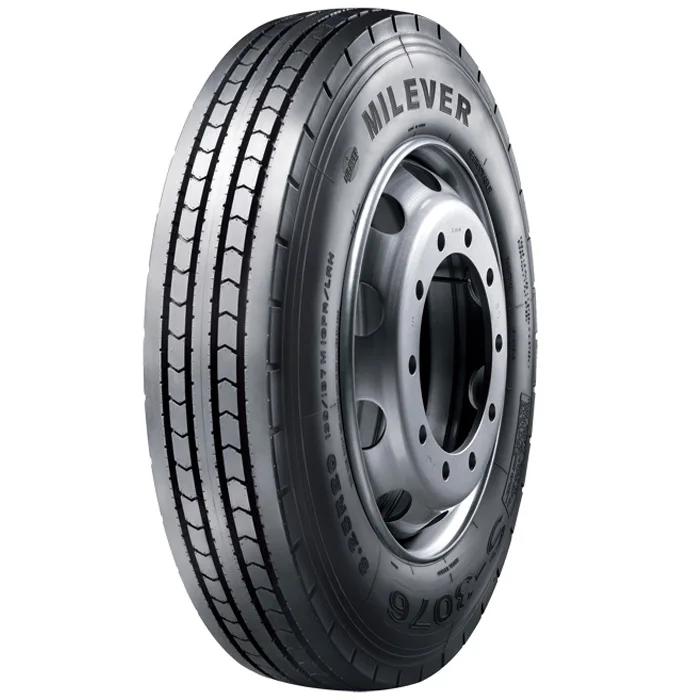 So it is very likely that the remaining tires suffered internal damage even if for a short period of time.”
So it is very likely that the remaining tires suffered internal damage even if for a short period of time.”
At the very least in tandem axle trailers, if a tire fails on one side, the second tire on the same side should also be replaced as that tire bore the most weight when the tire next to it failed. “When trailer owners suffer a failure on one tire alone and only replace one, there is a very high probability that they will suffer another failure soon as now the other tires on their trailer are most likely damaged. These customers are always quick to blame the manufacturer/dealer for poor tires,” Tsai says.
“The first tire failure may be due to road hazard and they replace one tire. Then in a short period of time they will very likely experience multiple additional failures due to the unseen damage to the other tires,” says Tsai.
“This causes a lot of frustration on the part of the consumers as they feel that all their tires are failing for no reason. In fact, it is when they had their first failure that lead to all others eventually failing as well.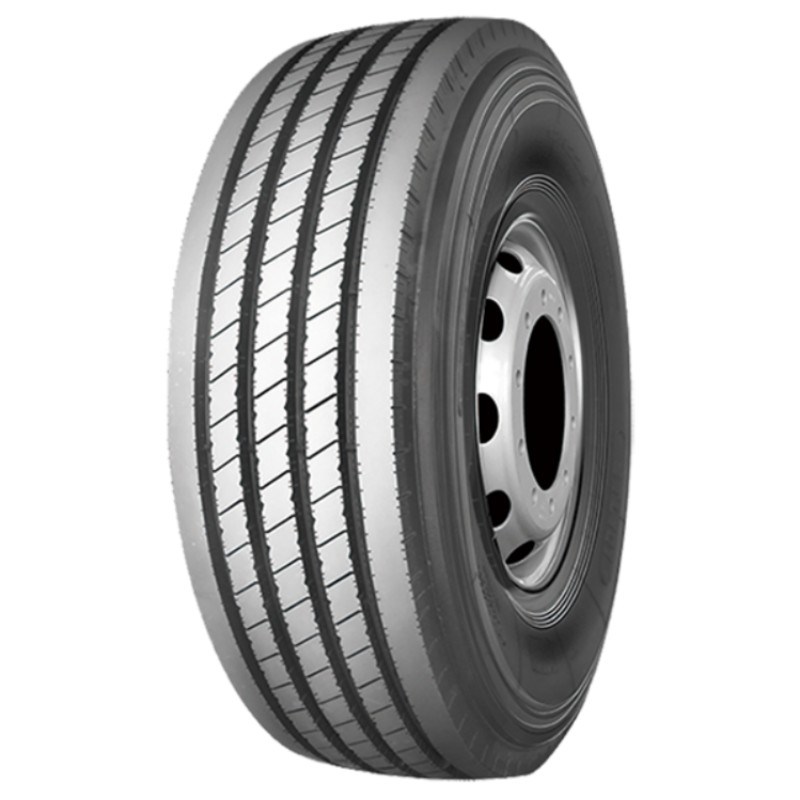 ”
”
Kenda’s Ostrowski offers some key messages to share with consumers to help build their knowledge about ST tires.
“There are leaders and followers in life, and also in tires,” he says. Passenger car tires are designed for turning and handling, the leaders; ST tires are designed to be towed and carry loads, the followers. The sidewall construction of these is designed for the designated applications.
“If you should use a passenger car tire for a trailer application, due to the more flexible sidewall you must discount the load rating of the tire by 11% and anticipate a ride with more sway. Trailer tires are not generally used as often as a passenger car tire.”
A trailer, when not in use, should be parked on a hard surface and the tires protected from UV rays to ensure maximum life.
“Do not exceed the recommended load designated on the sidewall of the tire,” says Ostrowski. A tire set to the maximum suggested psi will provide the maximum load range. Do not mix radial and bias tires on the same trailer. The load range should be the same for all tires on the same trailer, he says.
The load range should be the same for all tires on the same trailer, he says.
After a blowout on a tandem-axle trailer, replace both tires on that side. “The remaining tire was likely subjected to excessive load and as a result may fail in the near future,” he says.
Ostrowski has three recommendations to avoid trouble when towing:
He also offers maintenance tips for trailer tires not in service:
Size List
PATTERN NO.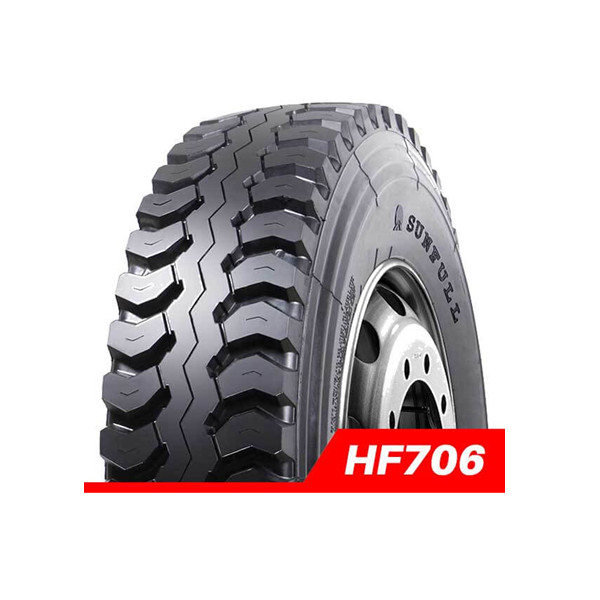 | SIZE | PLY RATING | LOAD INDEX | SPEED RATING | STANDARD RIM | TREAD DEPTH (mm) |
| HF706 | 7.00R16 | 14PR | 118/114 | M | 5.50F | 12 |
| 7.50R16 | 14PR | 122/118 | M | 6.00G | 14 | |
| 8.25R16 | 16PR | 128/124 | L | 6.50H | 15 | |
| 9.00R20 | 16PR | 144/142 | J | 7.00 | 16 | |
| 10.00R20 | 18PR | 149/146 | K | 7.50 | 16.5 | |
| 11.00R20 | 18PR | 152/149 | J | 8.00 | 17.5 | |
| 12.00R20 | 18PR | 154/149 | J | 8.50 | 18.5 |
Save
Features
 00R16LT, 7.50R16LT, 8.25R16LT, 8.25R20, 9.00R20, 10.00R20, 11.00R20 and 12.00R20
00R16LT, 7.50R16LT, 8.25R16LT, 8.25R20, 9.00R20, 10.00R20, 11.00R20 and 12.00R20 Size List
| PATTERN NO. | SIZE | PLY RATING | LOAD INDEX | SPEED RATING | STANDARD RIM | TREAD DEPTH (mm) |
| HF706 | 7.00R16 | 14PR | 118/114 | M | 5.50F | 12 |
| 7.50R16 | 14PR | 122/118 | M | 6.00G | 14 | |
| 8.25R16 | 16PR | 128/124 | L | 6.50H | 15 | |
| 9.00R20 | 16PR | 144/142 | J | 7.00 | 16 | |
| 10.00R20 | 18PR | 149/146 | K | 7.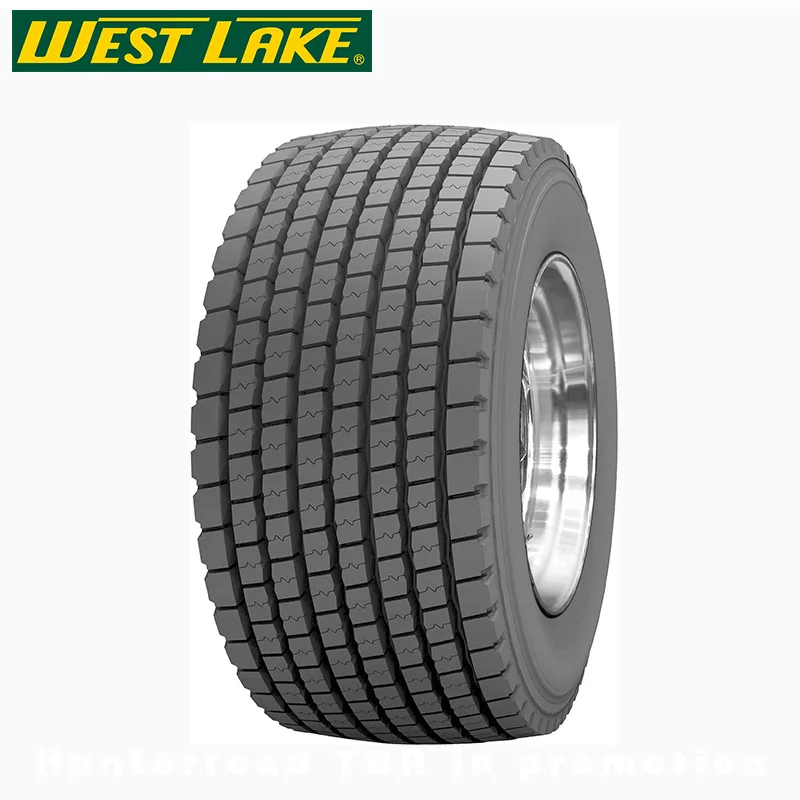 50 50 | 16.5 | |
| 11.00R20 | 18PR | 152/149 | J | 8.00 | 17.5 | |
| 12.00R20 | 18PR | 154/149 | J | 8.50 | 18.5 |
Features
Additional Info.
Our production schedule for TBR:
We almost collect new tires of car tires from our old/ old customers around 20th of each month, then we will arrange production for confirmed orders by end of month, delivery time will be informed at beginning of next month. If we can supply your order to by end of that date, we can arrange shipment for you around 30 days for your first order.
At present, we are looking for sole agent of truck and car tires in African and Middle East markets, if you have the confidence to meet our Minimum Requirements of our agency, please send email (tony@sinotyre.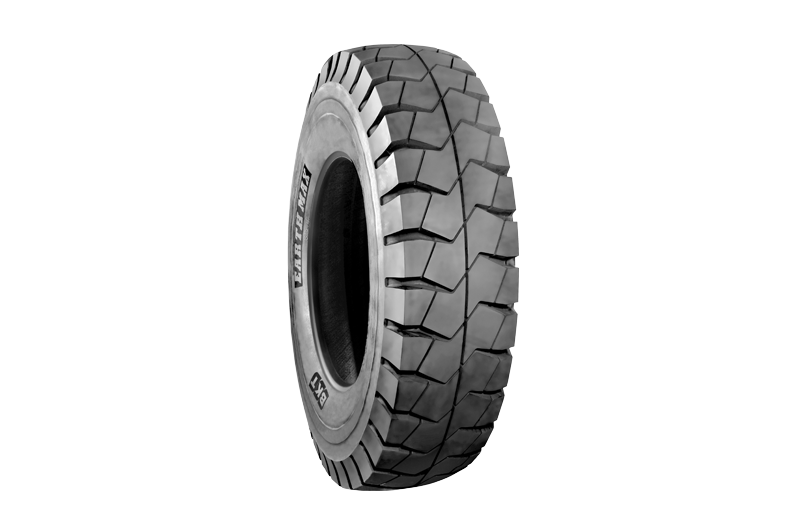 net) to us anytime, I would like to check which brand of tires we can supply to you at your target market.
net) to us anytime, I would like to check which brand of tires we can supply to you at your target market.
All 4 /Sunfull TBR 4
Join our newsletter and receive the latest news about calculator. We never spam
Hengfeng Tires Shanghai Office
Add.: Room 1209-1210, China Coal Building, No. 899 Dongfang Road, Pudong District, Shanghai, China. P.C. 200122
Tel: +8621-50942125 / 50942126
Email: [email protected]
© Copyright - Hengfeng Tire Manufacturer supply high quality tires. We will share very useful information about tire manufacturer in China, tire price, tire quality solutions every week. Please concern and welcome to contact us to get more useful details.. - Enfold Theme by Kriesi
Close
Moscow and region
Tires are one of the most important inventions of all mankind. It is worth noting that a modern car would not have become such a successful and efficient vehicle without pneumatic tires. Outwardly, the tires are little different from each other, with the exception of the tread pattern and their radius. All of them consist of various rubber compounds and fillers. Some sizzle - others don't. The round shape of the tires is maintained by the carcass. The carcass directly affects many tire characteristics. nine0003
It is worth noting that a modern car would not have become such a successful and efficient vehicle without pneumatic tires. Outwardly, the tires are little different from each other, with the exception of the tread pattern and their radius. All of them consist of various rubber compounds and fillers. Some sizzle - others don't. The round shape of the tires is maintained by the carcass. The carcass directly affects many tire characteristics. nine0003
Diagonal frame
Radial frame
Let's consider two types: tires with a diagonal and a radial carcass. Despite the external similarity, they are structurally very different.
Frame
The bias tire has a carcass made of
multi-ply cord. As a rule, the number of layers
is a multiple of two. Textile cords of different layers
are located at an angle of 35° to 40° to each other
and intersect exactly in the middle of the tire
protector.
Frame
Breaker Belt
Frame
In radial tires, the cords are located at a
angle of 90° and are located along the entire tire
tread.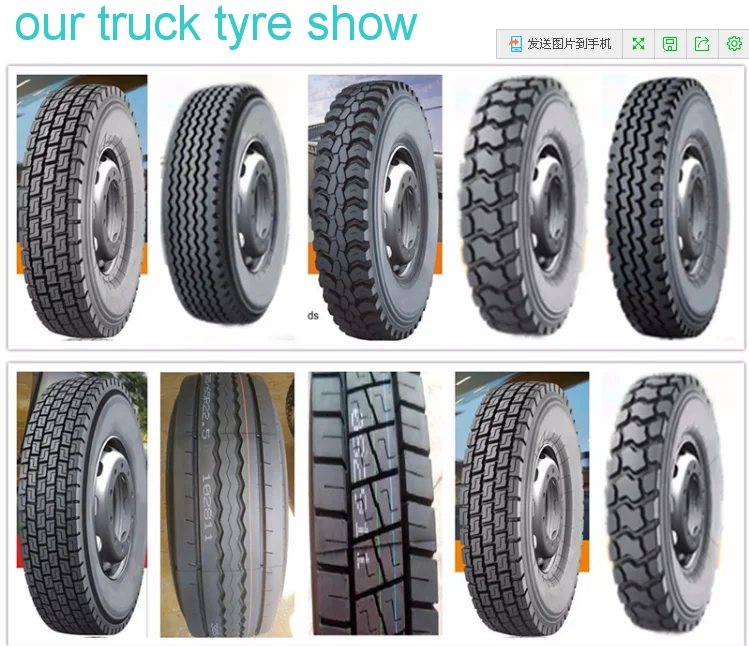 And those sections of the tire that
And those sections of the tire that
are located in the contact patch with the road surface
are reinforced with a steel cord (it is also called a belt belt
).
In addition to the difference in the arrangement of cords, there are many other differences
- Cord threads for diagonal tires are made of nylon or kapron, for radial tires they are made of steel. nine0003
- Bias tires can have several layers of cord - from two or more, radial tires have only 1.
- Bias tires, as a rule, have two bead rings, with a radial one.
- Most bias tube tires, tubeless radials.
Functional differences of radial tires
— Better contact with the road. Radial tires have a larger contact patch compared to bias
tires. nine0003
- The weight of a radial tire and a bias tire with the same radius will be different. Lighter tire with radial carcass
ply.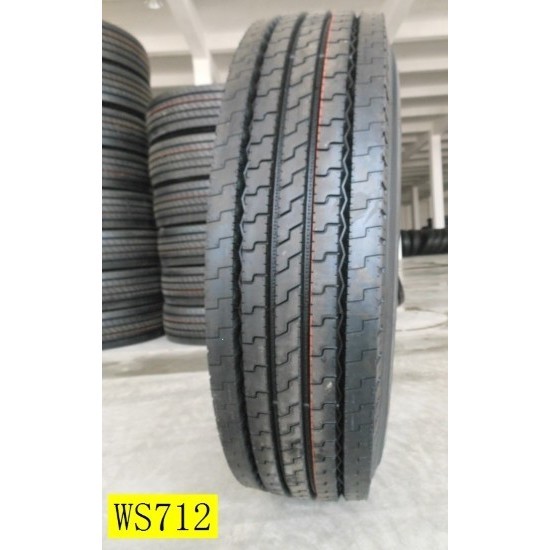
— A radial tire can carry more loads (15 to 20%) than a bias tire.
- The carcass of a radial tire has better thermal conductivity, due to this, heat dissipation in such tires
will be better.
Some differences of bias tires
— Tires with a diagonal carcass have a well-protected sidewall and are less afraid of lateral damage
compared to radial tires. In this case, diagonal tires are more protected from
side injuries.
- Bias tires are cheaper than radial tires.
- Despite their shortcomings, bias tires have found their way and continue to be used in
commercial vehicles. Radial carcass tires also found their place in a large number of
vehicles. Almost all car factories produce passenger cars equipped with tires
with radial carcass.
We have created this section specifically for tire recyclers or those who are going to become such in the Russian Federation.
In this section, we will not pour water and give a lot of information that is not necessary for the recycler, we will indicate the main characteristics of tires and divide them into groups within the framework of their disposal.
So, we distinguish two main classifications of tires:
1. By appointment : trucks, passenger cars and OTG (oversized tires). Truck tires are pneumatic tires for trucks, buses, trailers, tires from special equipment on board trucks. Passenger tires are tires from passenger cars and trailers for them, including tires for SUVs of the jeep class, tires from microtrucks. Car and truck tires come up to 1200 mm in outer diameter. Tires larger than 1200 mm are considered as oversized tires and oversized tires. As a rule, standard tire recycling lines can process tires up to 1200 mm in outer diameter, and additional equipment is required for the processing of LGR. The average weight of a passenger car tire is about 4 kg. The average weight of a truck tire is 50 kg. The weight of the KGSh starts from 70 kg and reaches 2 tons. The weight of the SKGSh reaches 4 and even 5 tons! nine0003
The average weight of a truck tire is 50 kg. The weight of the KGSh starts from 70 kg and reaches 2 tons. The weight of the SKGSh reaches 4 and even 5 tons! nine0003
2. According to the type of cord construction tires are radial and diagonal . For the processor, such an aspect as the material from which the cord is made (is it metal or textile) is important.
Radial tires are available for both truck and passenger cars. Diagonal tires are mainly truck and CG tires.
Truck tires of radial design Cords can be of several types:
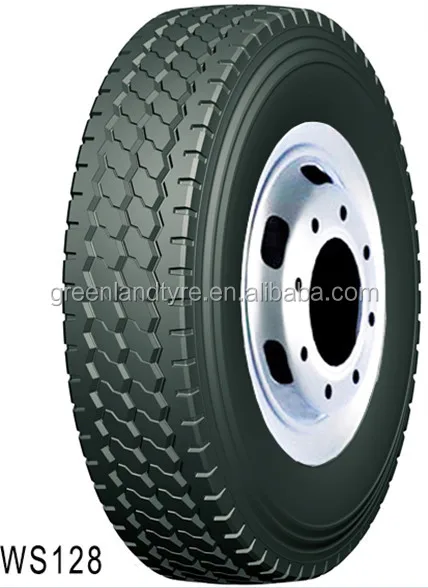 These are put on cars like MAZ, Kamaz, etc. Tires are characterized by the complexity of their processing due to the need for multi-stage destruction and separation from textiles and metal. Radial tires can be identified by the Radial label or by the size marking: 10.00 R20. The "R" icon just indicates that the tire is radial. nine0108
These are put on cars like MAZ, Kamaz, etc. Tires are characterized by the complexity of their processing due to the need for multi-stage destruction and separation from textiles and metal. Radial tires can be identified by the Radial label or by the size marking: 10.00 R20. The "R" icon just indicates that the tire is radial. nine0108 Bias Tires are metal free. They are characterized by the highest level of textile content. These are tires from trailers for tractors, tractor tires, tires from all-terrain vehicles such as GAZ 66, ZIL 131. Often these tires have a directional mud herringbone tread pattern. In Russia and the CIS countries, diagonal tires are quite common due to the fact that such tires are produced by domestic factories. This is due to: a) bad roads and their absence; b) outdated tire production technologies; c) a large amount of cultivated land in the agricultural sector; d) numerous quarries and mines where natural resources are extracted by equipment on the CGSH and SKGSh.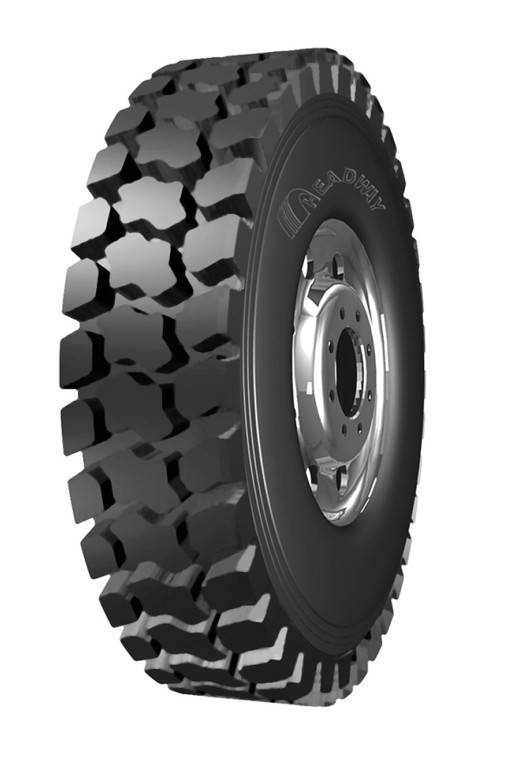 You can determine the diagonal tire by the size marking, instead of "R" before the designation of the landing diameter on such tires, the symbol "-" is indicated, for example, it looks like this: 10.00-20
You can determine the diagonal tire by the size marking, instead of "R" before the designation of the landing diameter on such tires, the symbol "-" is indicated, for example, it looks like this: 10.00-20
Car tires. They have mostly mixed type of cord (textile + metal), characterized by a very low content of textiles. The textile thread is very thin. In the process of mechanical processing, textiles from such tires are practically not noticeable, even if it is not taken away.
It is truck tires of domestic manufacturers with a high content of textiles: radial with a mixed type of cord and diagonal with a textile type of cord determine the main difficulties and features of tire processing in Russia. nine0082
That is why the complete sets of imported tire recycling equipment cannot cope with the task of recycling tires into commercial crumb rubber in Russia. Such lines need to be upgraded with a powerful textile separation system, as a minimum.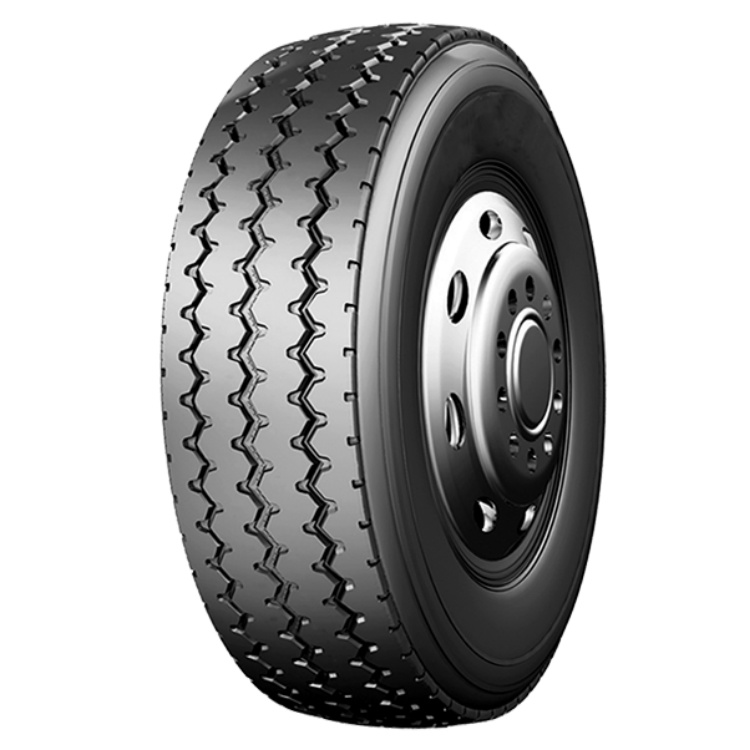
This picture shows a truck tire with 2 cord types:
Our recommendation:
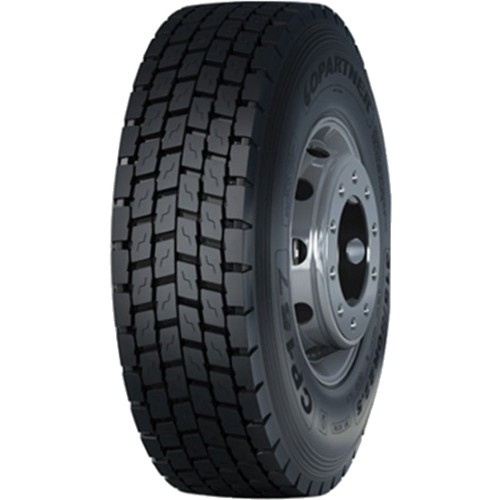 nine0138 - Truck tires, they are mainly rented out by enterprises. These are the most conscientious deliverers of rubber waste thanks to the regulations adopted in recent years. Supervisory authorities severely fine motor transport enterprises for violations of accepted legal norms. They are especially zealously fined if there is an operating legitimate tire recycling enterprise on the territory of the city, where you can hand over the scrap and receive documents for reporting to regulatory organizations. Typically, the cost of recycling such tires is several times higher than for passenger cars. For the convenience of calculating the cost of recycling, we recommend considering the weight of each truck tire as 50 kg. nine0138 - Oversized tires (OHG). Here the situation is the same as in the second case, but it should be taken into account that additional equipment is required for the processing of KGG and SKGGG to bring KGGG to a crushed state for its further processing on standard equipment.
nine0138 - Truck tires, they are mainly rented out by enterprises. These are the most conscientious deliverers of rubber waste thanks to the regulations adopted in recent years. Supervisory authorities severely fine motor transport enterprises for violations of accepted legal norms. They are especially zealously fined if there is an operating legitimate tire recycling enterprise on the territory of the city, where you can hand over the scrap and receive documents for reporting to regulatory organizations. Typically, the cost of recycling such tires is several times higher than for passenger cars. For the convenience of calculating the cost of recycling, we recommend considering the weight of each truck tire as 50 kg. nine0138 - Oversized tires (OHG). Here the situation is the same as in the second case, but it should be taken into account that additional equipment is required for the processing of KGG and SKGGG to bring KGGG to a crushed state for its further processing on standard equipment. Because of this, the cost of disposal of TUGs and TUGs can be higher than for standard tyres. For the convenience of calculating the cost of disposal of the LGR, we recommend that you indicate the average weight for each size of the LGR and the LGR - there are not so many of them in terms of dimensions. nine0138 - Tires heavily polluted, burnt, etc. We propose to introduce an additional coefficient on them and multiply the cost of disposal by 2-3 times by class.
Because of this, the cost of disposal of TUGs and TUGs can be higher than for standard tyres. For the convenience of calculating the cost of disposal of the LGR, we recommend that you indicate the average weight for each size of the LGR and the LGR - there are not so many of them in terms of dimensions. nine0138 - Tires heavily polluted, burnt, etc. We propose to introduce an additional coefficient on them and multiply the cost of disposal by 2-3 times by class. 